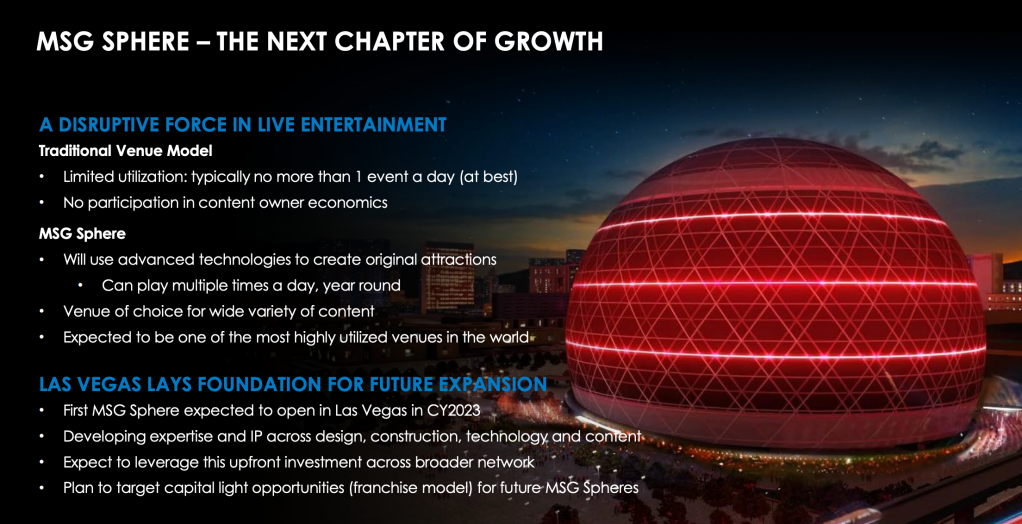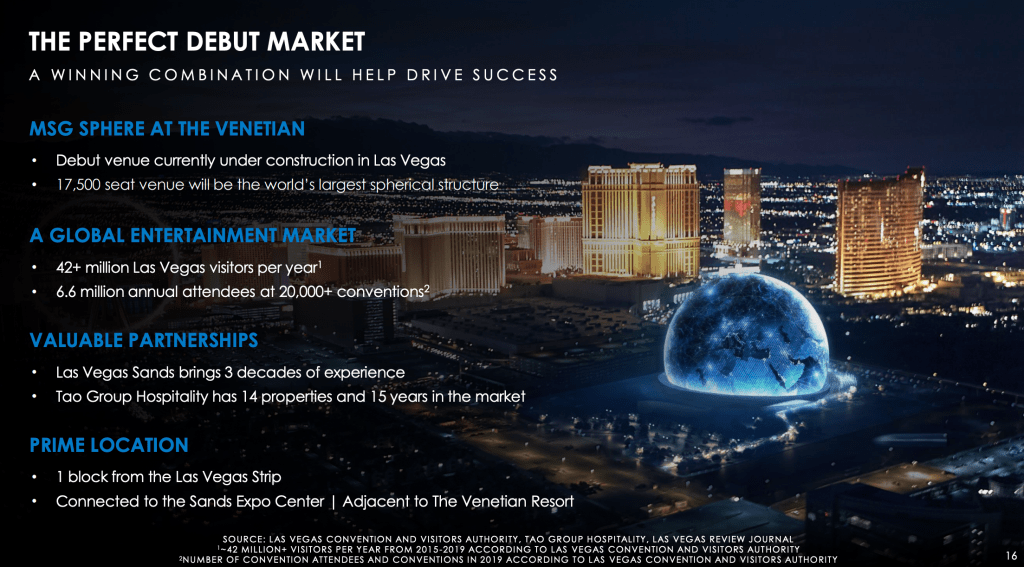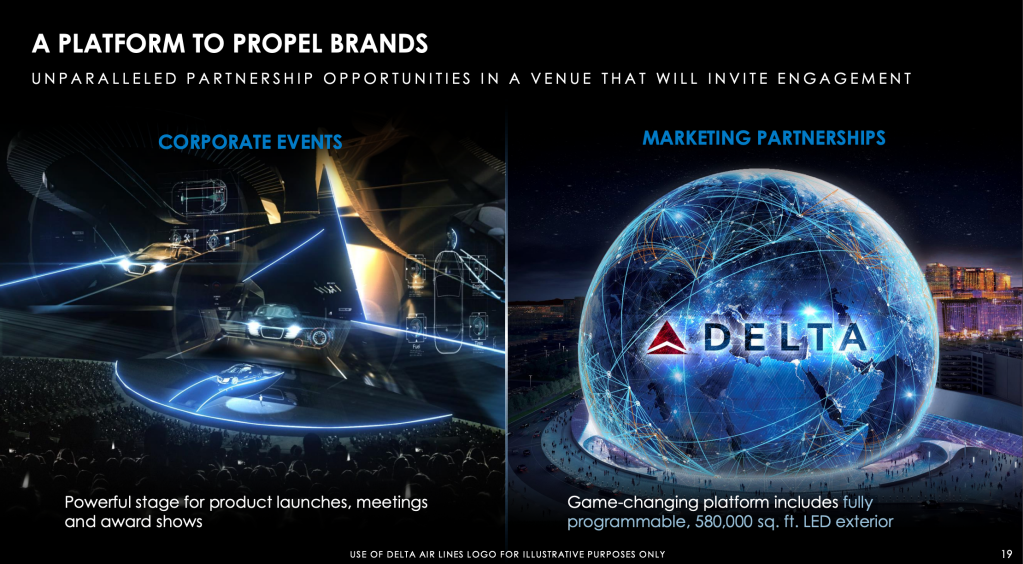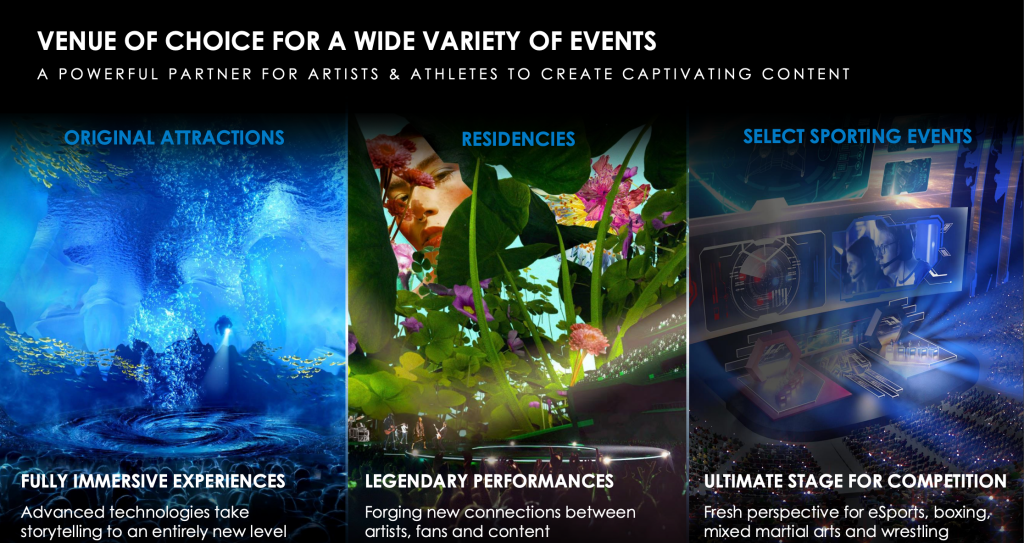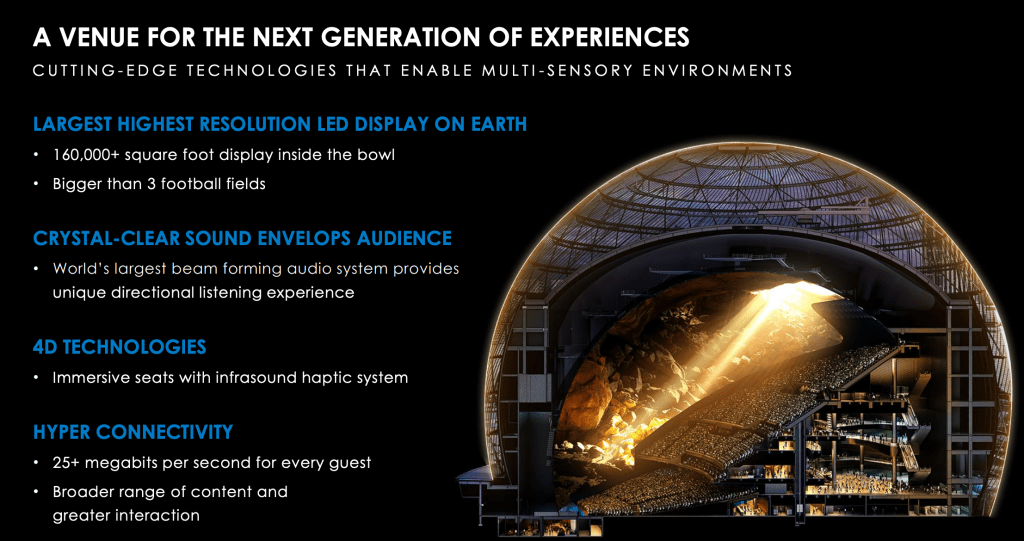Pitch deck: The MSG Sphere has tried to sell itself as one-of-a-kind inventory to advertisers

This article is part of an ongoing series for Digiday+ members to gain access to how platforms and brands are pitching advertisers. More from the series →
The Sphere’s bigwigs are banking on their gamble to hit the ad dollar jackpot.
Since the opening of Las Vegas’ multi-billion-dollar venue MSG Sphere in September, the facility has bled $98.4 million in operating expenses, according to its latest earnings report.
Recently, bosses are eyeing ad dollars to help pull themselves out of that financial hole and have taken meetings with marketers and agency execs to drum up interest. And it’s not just talk — Heineken, Marvel, Microsoft’s Xbox, Coca-Cola, Meta, YouTube, the NBA, and 20th Century Fox, among others, have put their money where their mouths are, following up those discussions with actual ad purchases.
The Sphere’s pitch deck from 2021, shared exclusively with Digiday, sheds light on how it has messaged itself in these early days. In an effort to set itself apart from traditional outdoor advertising, the company is branding its venue as a flex for marketers.
As per the deck, brands can advertise in and outside the Sphere through three types of events, including original attractions, residencies and sporting events like mixed martial arts, esports, boxing, and professional wrestling. Also, the deck claimed its Sphere is bigger than three football fields, has immersive seats with an infrasound haptic system, and uses the world’s largest beamforming audio system. In other words, the deck wants to leave marketers in no uncertain terms that this opportunity is truly one-of-a-kind.
A concert was held by the band U2 for the first time at the Sphere, which opened in September and was the first event to be held at the venue. Additionally, the NBA was the first brand to advertise on the sphere when it turned into a basketball.
The Sphere has been operational for two months but is currently facing a substantial financial loss. The structure’s unique inventory relies technologically on brands that advertise on it to provide. This model is a challenge for brands with limited financial resources, making it difficult for them to engage in advertising.
Details of the pricing structure are not included in the deck. However, the cost of advertising on the MSG Sphere is reportedly $450,000 per day, which will no doubt raise questions among marketers on the potential return on investment. Some of them already are.
“Brands frankly aren’t sure what to make of the Sphere or how they would use it,” said Matt Voda, CEO at OptiMine Software. ”It’s so new and so different that there aren’t proven ways to leverage this asset, and because it comes with a big price tag, it scares most marketers because they don’t have confidence in the ability to leverage the Sphere in a way that will have a proven impact.”
The venue’s 580,000-square-foot LED exterior, fully programmable, adds an extra dimension to its event hosting capabilities.
Marketers said The Sphere’s pitch strategy centers on key elements designed to capture interest. Due to its recent opening, marketers are indicating that there is a shortage of industry feedback to thoroughly gauge the overall effectiveness and impact of their advertising campaigns on the Sphere. The novelty of the Sphere has resulted in a lack of substantial data or insights from industry experiences, making it challenging for advertisers to assess the platform’s performance with certainty.
Execs are touting the Sphere as a brand marketing vehicle for PR impact tied to new product launches or major events that is distinct from typical OOH outlets. Translation: the metrics for it are a work in progress.
Doug Zarkin, chief brand officer of Good Feet Worldwide, a manufacturer and retailer of premium fitted arch supports regards the Sphere as a bold and inventive platform, as he sees value in advertising on the Sphere.
“The Sphere’s value lies not just in its scale but in its potential to create unique, emotionally engaging experiences that align with a brand’s vision,” said Zarkin. “It’s a tool that, if leveraged thoughtfully, could redefine brand storytelling in the physical space, much like how digital platforms have revolutionized online marketing.”
More in Marketing

Zero-click search is changing how small brands show up online — and spend
To appease the AI powers that be, brands are prioritizing things like blogs, brand content and landing pages.

More creators, less money: Creator economy expansion leaves mid-tier creators behind
As brands get pickier and budgets tighten, mid-tier creators are finding fewer deals in the booming influencer economy.

‘Still not a top tier ad platform’: Advertisers on Linda Yaccarino’s departure as CEO of X
Linda Yaccarino — the CEO who was never really in charge.
